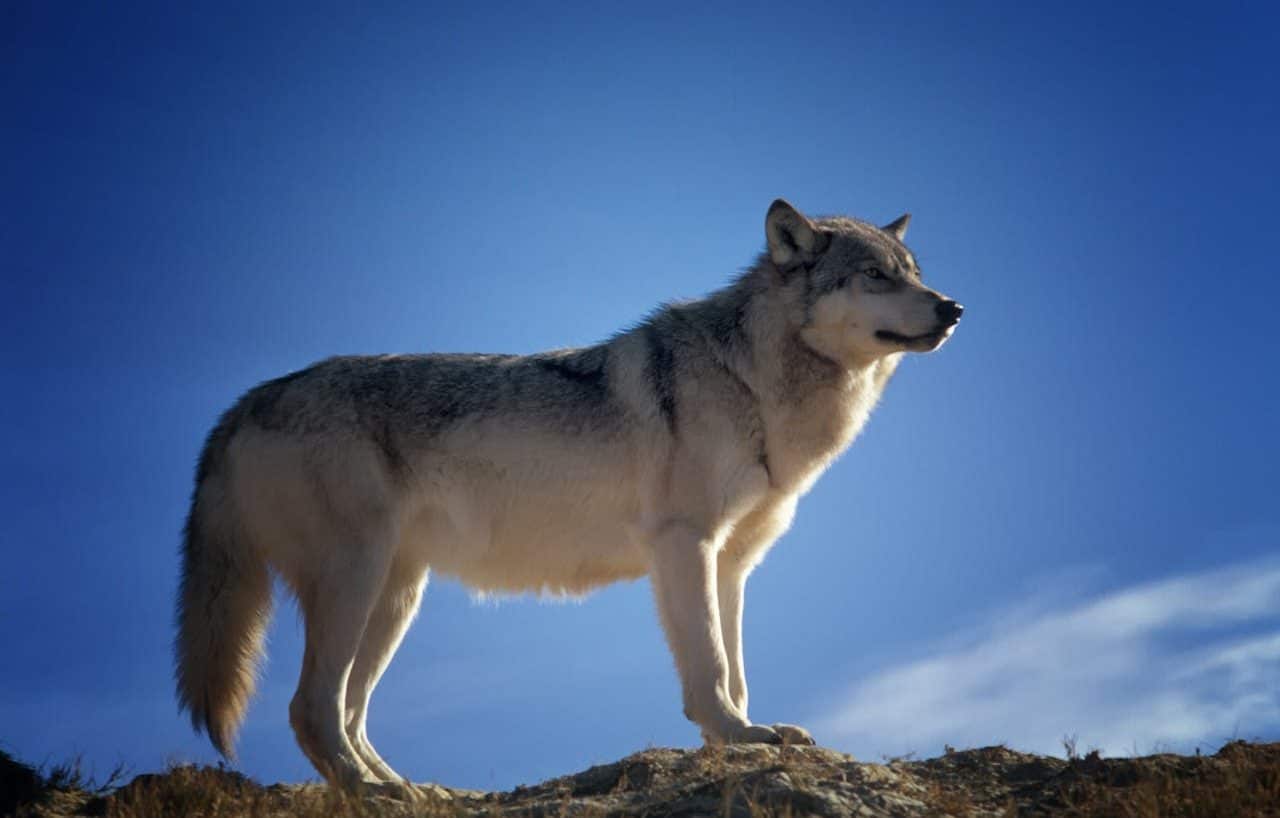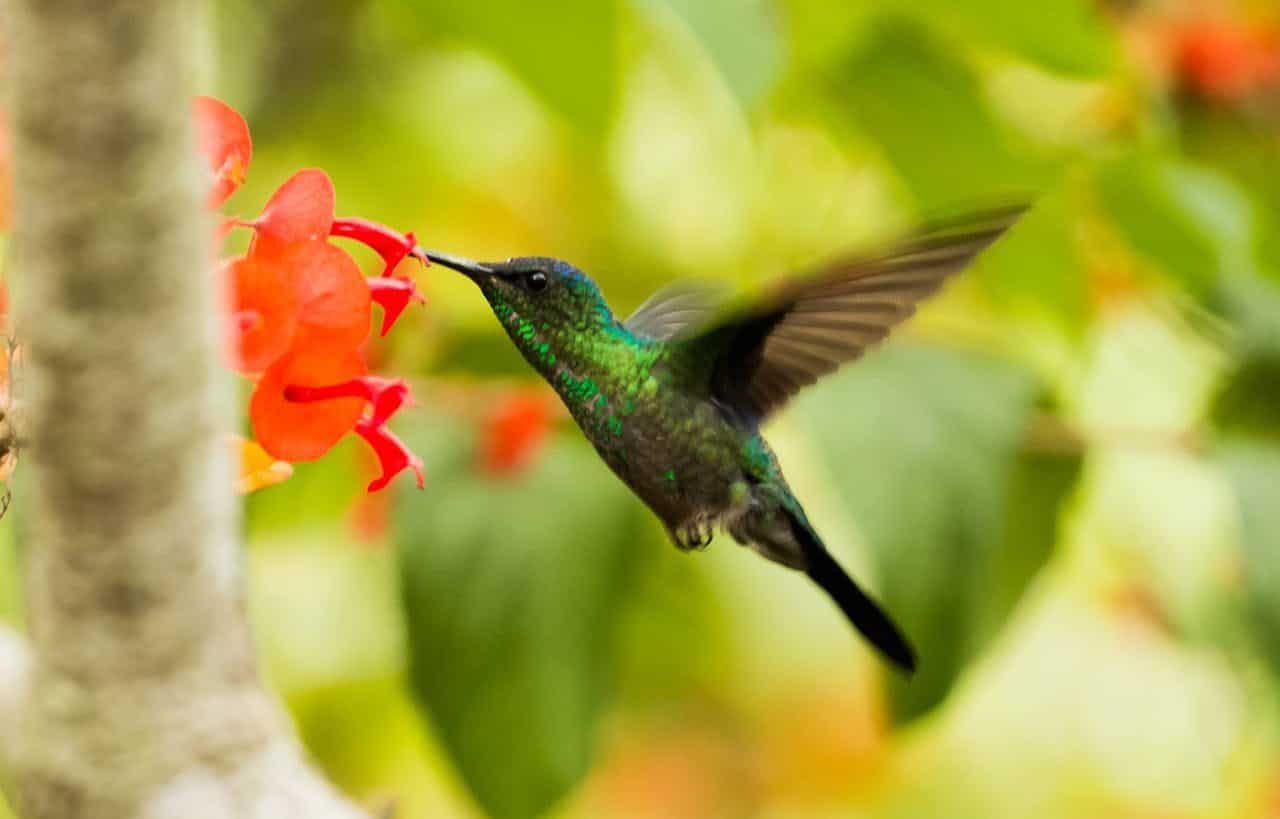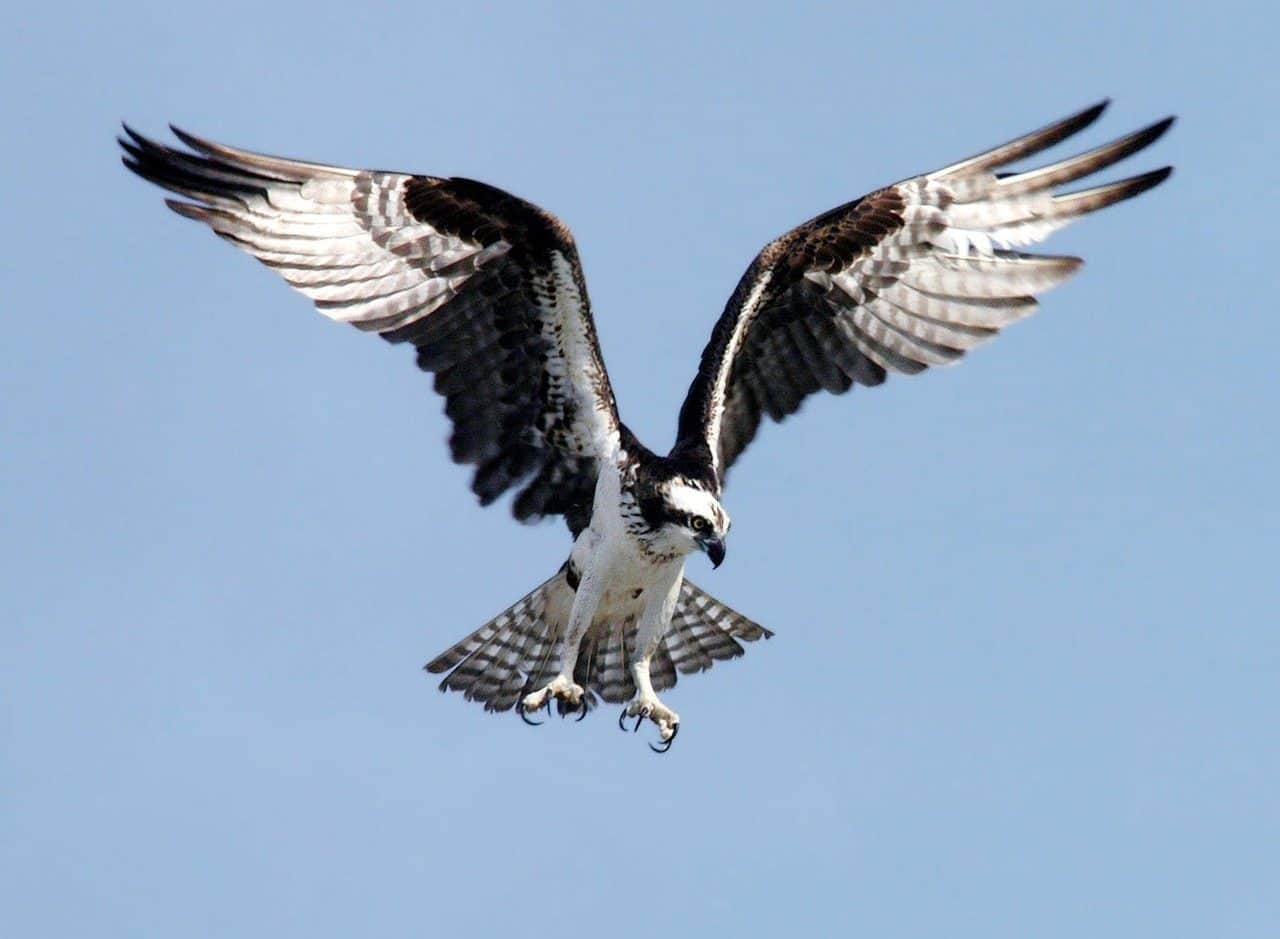
In forests and tundras, we find the ecological niche of the gray wolf.
The ecological niche is the set of environmental and biological conditions that a species needs to survive, reproduce and maintain its population. It includes aspects such as habitat, interactions with other species and their role in the ecosystem.
Examples of ecological niche
The following examples of ecological niches show that species fulfill specific roles in their environments, influencing the structure and balance of ecosystems.
Niche of the gray wolf (Canis lupus)
The gray wolf occupies a niche as a top predator in ecosystems such as forests and tundras. Their role is to control populations of herbivores such as deer and elk, which indirectly regulates the area's vegetation. In addition, the wolf interacts with other scavenger species that benefit from the remains of their prey.
Hummingbird niche (Trochilidae)
Hummingbirds specialize in feeding on flower nectar, contributing to plant pollination. Its niche depends on the availability of flowers that can sustain its fast metabolism. At the same time, they compete with insects for nectar.
Niche of the mycorrhizal fungus
This type of fungus forms a symbiotic relationship with the roots of plants, from which it obtains nutrients and the plants improve the absorption of water and minerals. Its niche is fundamental in nutrient cycles in many forest ecosystems.
Types of ecological niche
Fundamental niche
It refers to the total set of conditions and resources that a species could use if it did not have competition or limitations imposed by other species. That is, it covers all the areas and roles that the species could potentially occupy in an ecosystem . However, the fundamental niche is rarely fully fulfilled in nature due to interaction with other organisms.
Niche realized
It is the niche that a species actually occupies in an ecosystem, taking into account the limitations imposed by factors such as competition , predation and environmental conditions. For example, although a plant can grow in a wide range of soils (fundamental niche), in practice it may be restricted to a specific type due to competition with other plants.
Space niche
It refers to the physical location or space that a species occupies within an ecosystem. It can be a specific place where it feeds, reproduces or seeks shelter. For example, some bird species occupy different spatial niches by foraging at different levels of trees.
trophic niche
It describes the role that a species plays in the food chain (food web), that is, whether it is a producer, consumer or decomposer. Predators, herbivores and decomposers have different trophic niches.
Multidimensional niche
This concept is broader and more modern, considering all the interactions of a species, such as space, resources, time and biological interactions, in a more complex ecological context.

Biodiversity is the variety of species in the same ecosystem and their interactions.
Biodiversity and adaptation
Biodiversity in an ecosystem refers to the variety of species that coexist and their interactions within that environment. It is the result of evolutionary processes, such as adaptation , which allows species to adjust to their environment through morphological, physiological or behavioral changes.
A key factor in biodiversity is adaptive diversification , a process in which species differentiate and evolve from a common ancestor, occupying new ecological niches. Adaptive radiation is a special case of adaptive diversification , where a group of organisms expands rapidly to fill diverse niches in response to environmental changes or the emergence of new opportunities. A clear example is the evolution of Darwin's finches in the Galapagos Islands, which specialized in different food sources.
Ecological specialization is a direct consequence of these processes, in which a species adapts to a particular niche, optimizing its survival in that specific context. However, this specialization often increases interspecific competition between groups occupying similar or overlapping niches. In these cases, species may be forced to adapt further or move into other niches to avoid competitive exclusion.
Biogeochemical cycles
Biogeochemical cycles are natural processes that move essential elements such as carbon, nitrogen and water through the biosphere, atmosphere, hydrosphere and geosphere. They are essential for maintaining ecological balance and, therefore, directly influence the ecological niches that species occupy.
The carbon cycle is key to life, since carbon is an essential component of organic molecules. Organisms, through photosynthesis , respiration, and decomposition , play a vital role in this cycle. Plants, for example, absorb carbon dioxide to produce energy, establishing a niche of primary producers that is exploited by herbivores and carnivores.
The nitrogen cycle is equally crucial, as nitrogen is an essential nutrient for the formation of proteins and nucleic acids. Through processes such as nitrogen fixation by bacteria, this element is converted into forms usable by plants, which are then consumed by other organisms. The availability of nitrogen in an ecosystem affects the niches of various plant species and, consequently, food webs.
The water cycle also plays an important role, regulating access to water, a vital resource for all organisms. The availability of water determines the ecological niches that can exist in different ecosystems, from deserts to tropical rainforests. Evaporation, condensation and precipitation are part of the cycle that distributes water and defines habitat zones and interactions between species.

Predation consists of one organism hunting and consuming another.
Population dynamics and ecological interactions
A biological population is a group of individuals of the same species that live in the same area and share an ecological niche. Population dynamics describe changes in size, density and structure of these populations over time, influenced by factors such as reproduction, mortality, immigration and emigration. Furthermore, ecological interactions play a critical role in how these populations occupy and maintain their niches.
Below we study some ecological interactions between different species within an ecosystem.
Predation
One organism (predator) hunts and consumes another (prey). This regulates both prey and predator populations, affecting the niches of both parties. For example, if the population of a predator decreases, the population of its prey can grow, altering the structure of the ecosystem.
Mutualism
A relationship in which both species benefit. A classic example is the relationship between plants and pollinators: plants obtain pollination while pollinators obtain food, sharing interdependent niches. Within mutualism , there is symbiosis , a close and prolonged relationship between species, which can be beneficial, neutral or harmful.
Parasitism
A form of symbiosis in which one organism (the parasite) benefits at the expense of another (the host), causing harm to it without immediately killing it. This type of interaction affects the health and survival of host populations, altering their niches and ecosystem dynamics.
Commensalism
An interaction in which one species benefits while the other is neither positively nor negatively affected. An example is when certain birds build their nests in trees, benefiting from the shelter without harming or benefiting the tree.
